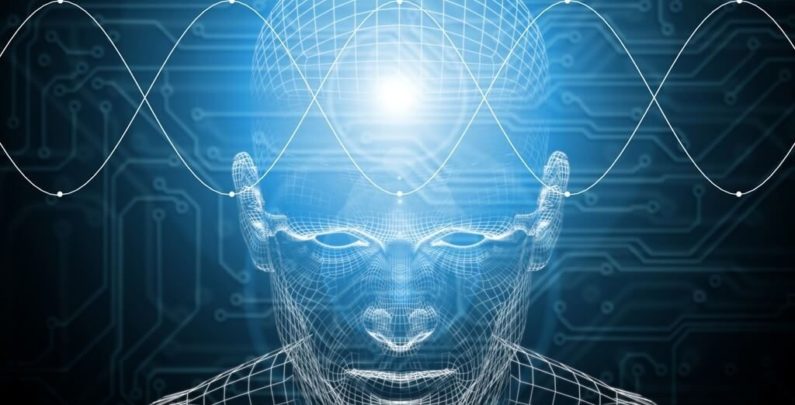
THE BIOENERGETIC ORGANISM
In most cases, it is difficult to imagine how PEMF therapy can work. In addition, magnetic fields are simply too elusive: you can neither see nor hear them, nor smell them, and seldom feel them.
In order to understand how the human organism interacts with and reacts to magnetic fields, a small digression into the physics of electromagnetism is needed.
But as soon as we realize that we live in a magnetic world, how vital processes of human life are dependent on electrical potential, and that electricity and magnetism are not two separate phenomena but different aspects of the same phenomenon, it will be easy to understand how the human body can respond to pulsating electromagnetic fields.
We all live in an electromagnetic world
The earth’s magnetic field is caused by the friction of masses in the liquid, iron-containing outer core, which creates a magnetic flux density of about 50 microTesla – Tiny, but without this magnetic field life on Earth would be impossible.
To exist in this electromagnetic world, our bodies must be part of it
The human brain is undoubtedly a fascinating construct. It consists of about 86 billion nerve cells, called neurons, and trillions of connections between them. That means, there are more neuronal connections in a cubic centimeter of brain tissue than stars in the Milky Way! This immense neural network is responsible for everything related to human existence. From sensory perceptions to thoughts to all functions of the body – everything is controlled by the data flow of the neural network of the brain. These data are transmitted from one neuron to another with the help of electricity. When millions of neurons communicate simultaneously, a significant amount of electrical activity is produced that can be measured with an EEG (Electroencephalograph).
When electricity flows, magnetic fields are created
This extraordinary amount of electrical activity that keeps our body alive naturally creates its own magnetic fields. Whenever electricity flows, and that means when charged particles and molecules like ions are being moved, a proportional magnetic field is created according to Ampere’s law. That is not magic but basic electromagnetic physics.
Electricity and magnetism go hand in hand
James Maxwell, the founder of electromagnetism, showed how electricity and magnetism go hand in hand. His equations – the so-called Maxwell equations – form the foundations of the theory of electricity and magnetism. One of these equations is the aforementioned Ampere’s law. Most people assume that this electrical activity is limited to the nervous system, but the vast majority of chemical reactions in the body are accompanied by the movement of charged particles (ions). Considering that most fluids in the body are actually electrolytes, which are ions dissolved in liquid, it is quite possible to compare the human body to a large battery that generates electricity and occasionally needs to be recharged.
The bioelectromagnetic organism
Once the connection between the magnetic aspects of the human body and its biophysical chemistry has been established, it becomes easier to see the body as a dynamic, ever-changing bioelectrical and thus biomagnetic organism governed by all the laws of physics of electromagnetism.
This means that the body not only has a vascular system and a nervous system, but also a less obvious complex electromagnetic system. The biomagnetic fields of the body, although extremely small in intensity, are measurable. Magnetoencephalography (MEG) and magnetocardiography (MCG) measure the magnetic fields generated by the electrical activity in organs of the body and can be used diagnostically in medicine.
The role of the cell membrane
The electrical activity of the body takes place mainly in the cell membrane. Be it as a membrane of nerve cells or muscle cells, it is crucial for maintaining cell structure and protecting its contents. The cell membrane separates the extra- from the intracellular space, acting as a kind of gatekeeper that opens and closes channels, and thus determines which ions can flow.
The transmembrane potential
The cell membrane itself has a voltage called the transmembrane potential. This electrical potential is generated by the unequal ion – and by that electrical – charge distribution between the inside and the outside of the cell. In concrete terms, this means that in the human body the intracellular space is negatively charged compared to the extracellular space – a charge called transmembrane or resting potential.
The transmembrane potential and the opening and closing of these ion channels is the decisive mechanism for the excitability of the cell, the triggering of action potentials and thus the transmission of stimuli. When the channels are closed, the cell membrane is in its resting potential and when it is open, it is at its action potential.
The action potential
The action potential leads to the transmission of electrical excitation by changing the membrane potential. Action potentials in cells are fundamental to any form of stimulus transmission and thus necessary conditions for life.
Action potentials occur in excitable tissues, such as nerve or muscle fibers, when a changing resting potential reaches a certain threshold. An action potential runs according to the all or nothing principle – either an action potential is triggered or not. Ion channels cannot be half
open or half closed, there is no intermediate state and no “half action potentials”.
Once all the channels are open, the membrane potential is so great that the polarity of the membrane is reversed. Then the channels close and the membrane returns to its resting potential. This ebb and flow of cell energy activity is the basis for all living organisms.
An action potential thus generates an exchange of ions and thus a movement of charge. And this generates as we have learned according to Ampere’s law, a proportional magnetic field.
Charge means life
The charge potential plays different roles depending on the cell type, but is usually responsible for cellular communication or activation of cellular processes. For example, muscle cells use voltage potentials as a first step to trigger action potentials and thus muscle contractions. Since all potentials are controlled by charge, they can be influenced by magnetic fields.
PEMF vs. Electrostimulation
In many ways, the PEMF therapy does not differ much from the electrical stimulation. The main difference is that PEMF therapy induces current in tissues, while electrical stimulation conducts current directly into tissue.
Magnetic fields as a transport medium of electrical energy
Because PEMF therapy uses magnetic fields as a transport medium for stimulation and allows them to pass through biological tissue unhindered, it can induce charges deep in the body. And it is non-invasive, safer and better tolerable.
Because PEMFs induce physiological ionic shift in tissues, they can only produce as much charge as they are naturally capable of. Tissues cannot be overcharged by PEMF. Electric stimulation, on the other hand, can actually cause burns because externally applied electrical energy is used.
Magnetic fields and charge
Magnetic fields affect charged particles in a way that all elements or processes of the human body that rely on charge can be directly affected by magnetic fields. It has been shown that PEMFs enhance the function of cell membranes by helping restore healthy transmembrane potential and revitalizing the cell.
This is especially true for the sodium / potassium and calcium ion channels. The inflow and outflow of calcium to the cell is particularly important for the normalization of cell function.
The best-studied effects of PEMFs are the modification of these ion channels. These effects of PEMFs on the calcium channels appear to be responsible in particular for most of the physiological effects of PEMFs.
Research online for yourself about PEMF therapy, and learn more about all of the studies that have been conducted on improving overall health by PEMF therapy.
Contact us anytime, we are just a Phone Call away to assist you! Or simply just WhatsApp us now.
